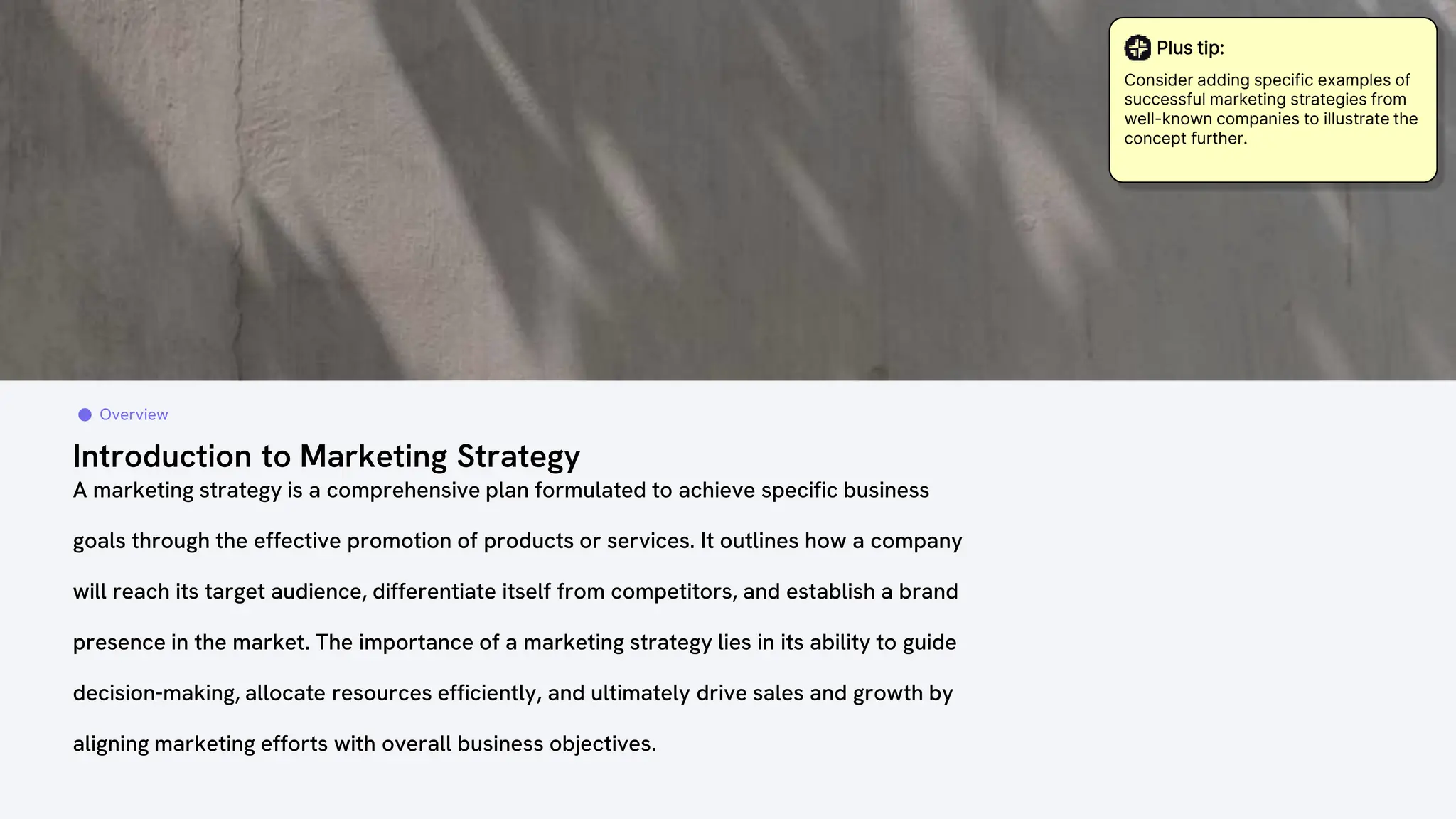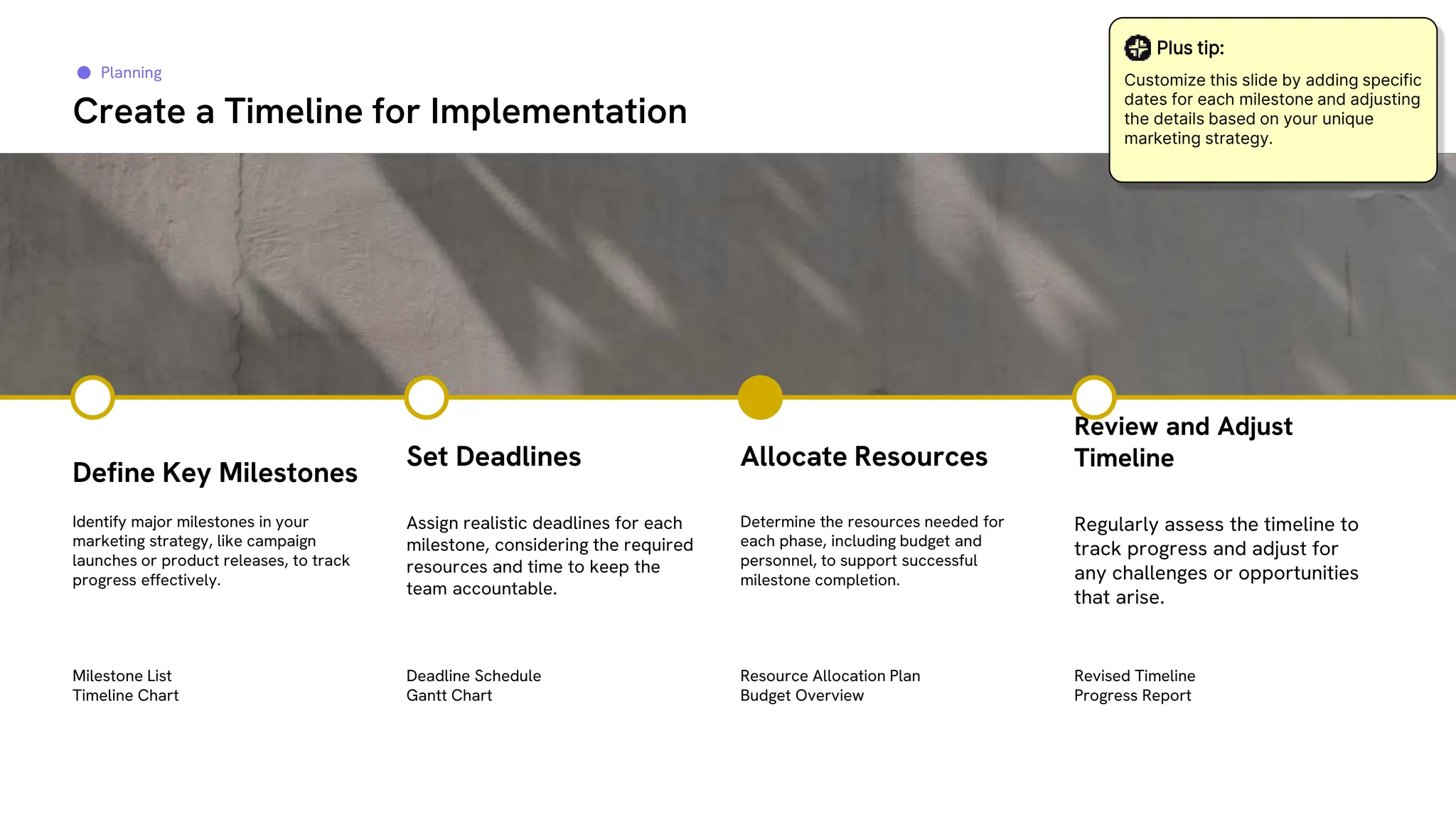This document provides a comprehensive guide on creating a marketing strategy, detailing steps such as defining business goals, understanding the target audience, conducting a SWOT analysis, developing a marketing mix, and setting a budget. It emphasizes the importance of aligning marketing efforts with overall business objectives to drive growth and sales. Additionally, it offers tips for customization and practical examples to enhance understanding and application of the concepts presented.











